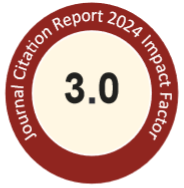Abstract
The antibiotic residues in 1,022 pork carcass samples, which were collected from 19 areas in Taipei, Taichung and Kaohsiung counties between January and June, 1997, were systematically investigated using a modified four-plate test (MFPT). Four culture media inoculated with 3 strains of bacteria were used; two were inoculated with Bacillus subtilis at pH 6.0 and pH 8.0, and the third and fourth were inoculated with Bacillus cereus and Sarcina lutea, respectively. The identification and quantification of tetracycline residues in the raw meat was performed by bioassay and bioautography. Streptomycin and chloramphenicol in pork carcasses were screened by ELISA and further quantified using the HPLC method. Results showed that using the CNS 5916 method, only 1 out of 1,022 test samples (0.1%) was detected to contain an antimicrobial agent. While using the MFPT method, 4.11% and 0.64% test samples were found to contain tetracycline and streptomycin residues, respectively. No chloramphenicol residue was detected in any tested samples. It was concluded that the MFPT method is practical, sensitive, less expensive, and simple as compared to the CNS 5916 and FPT methods, which are routinely used in Taiwan and the European Community, respectively. MFTP is therefore recommended as an official method to assay the antimicrobial agents in foods.
Recommended Citation
Chang, C.-S.; Tai, T.-F.; and Li, H.-P.
(2000)
"Evaluating the applicability of the modified four-plate test on the determination of antimicrobial agent residues in pork,"
Journal of Food and Drug Analysis: Vol. 8
:
Iss.
1
, Article 6.
Available at: https://doi.org/10.38212/2224-6614.2847

